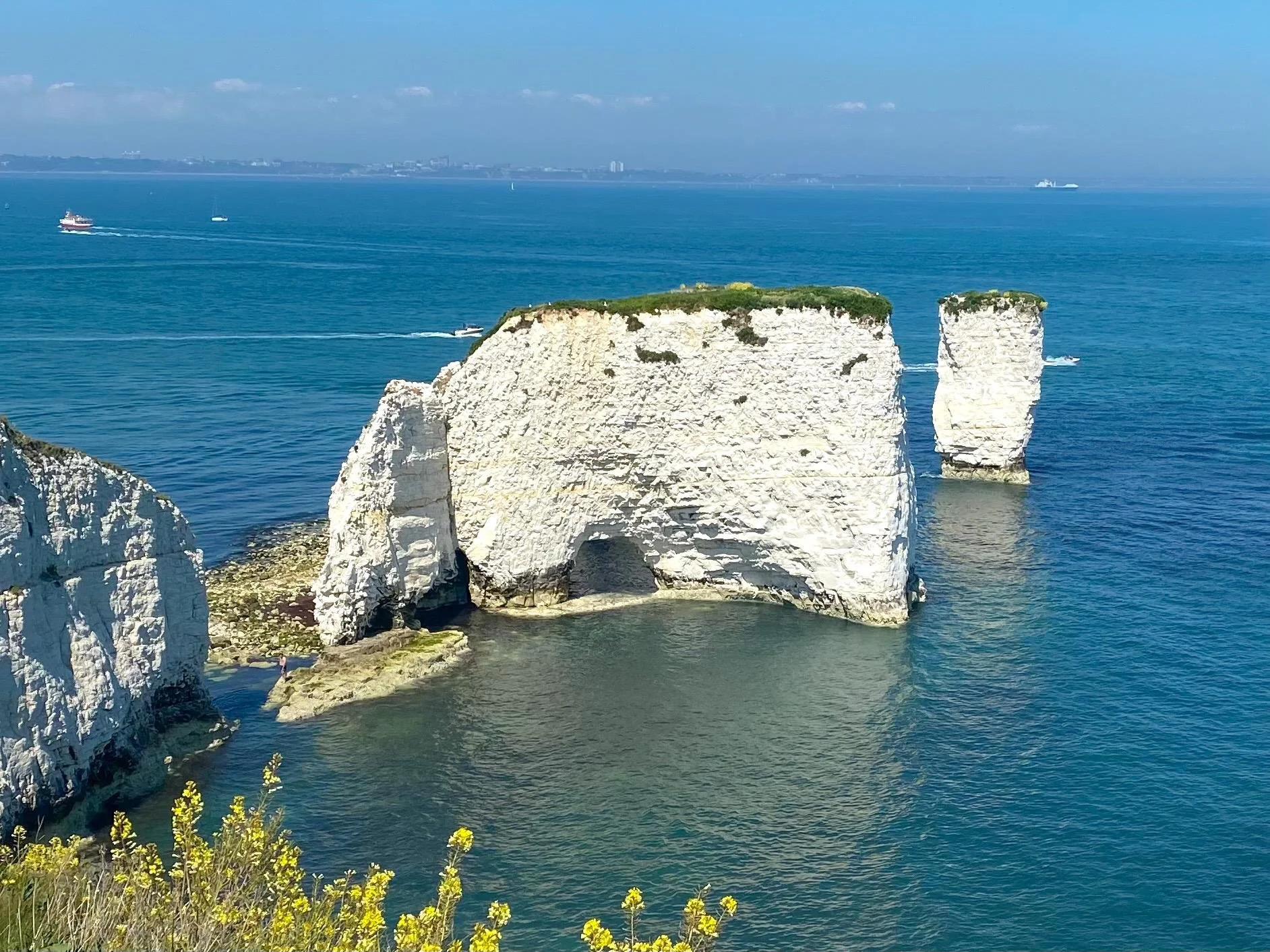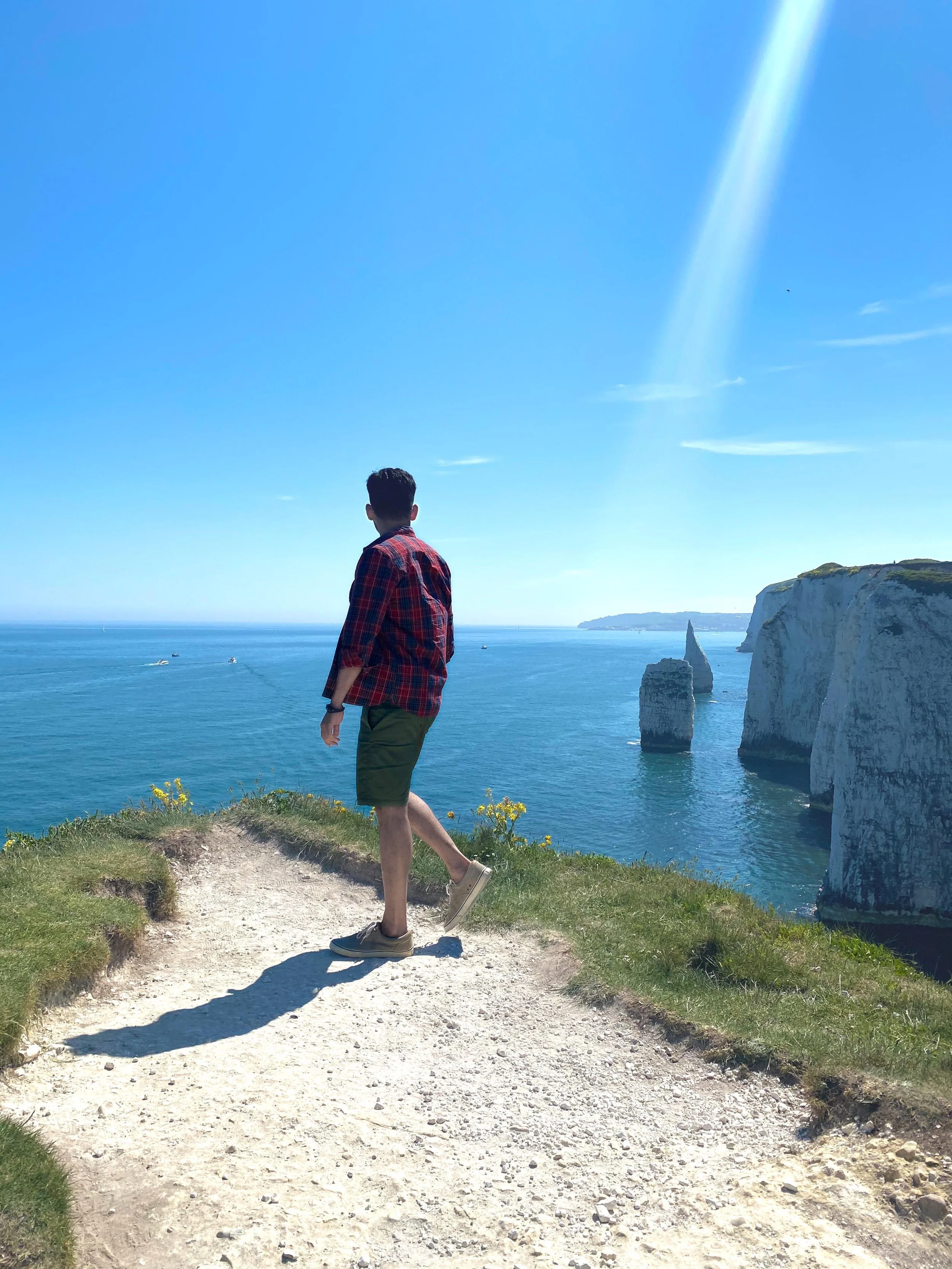Old Harry Rocks – Britain’s Wild Coastal Wonder You Have to See This Year
If you're looking for a place in Britain that feels like the edge of the world—raw, powerful, and breathtakingly beautiful—you’ll find it in Old Harry Rocks, perched on the eastern tip of the Jurassic Coast in Dorset. Imagine towering white chalk cliffs plunging into the sea, dramatic coastal views stretching as far as the eye can see, and stories carved into stone over millions of years. This isn’t just a photo-op spot—it’s a walk through time.
This time we’re heading to one of the UK’s most iconic natural landmarks that you definitely want to put on your travel list: Old Harry Rocks.
What Are Old Harry Rocks?
Old Harry Rocks are chalk rock stacks that rise majestically out of the sea at the end of Handfast Point, near the village of Studland in Dorset. These striking white formations are part of the Jurassic Coast, a UNESCO World Heritage Site known for its stunning geological features and rich fossil history.
The “Old Harry” name dates back centuries, though who Harry really was is still up for debate. Some say it refers to pirate Harry Paye, who famously plundered French ships along this coast. Others link the name to the Devil, who was often nicknamed “Old Harry” in British folklore—perhaps because these rocks feel like the edge of the known world.
Why It’s Worth the Trip
Whether you're a photographer, a hiker, a history buff, or just someone looking for a jaw-dropping day out, Old Harry Rocks delivers. It’s not just the destination—it’s the journey. You’ll hike through windswept cliffs, stumble across Celtic earthworks, and pass through areas teeming with wildflowers and seabirds.
And the views? Oh, the views. From the cliff tops, you can see across Studland Bay and all the way to Poole Harbour, one of the largest natural harbours in the world.
This part of Dorset is where the English landscape feels truly ancient wild, unfiltered, and magical.
The Best Way to Experience It: Circular Coastal Trail
One of the most rewarding ways to see Old Harry Rocks is via the circular coastal walk that starts from South Beach in Studland. The route is about 3.5 miles (5.6 km) and takes around 2–2.5 hours, depending on how often you stop to snap photos (which will be often, let’s be honest).
What You’ll See Along the Way:
Wildlife-rich heathlands in Studland Bay (keep an eye out for rare birds and butterflies!)
Sweeping coastal views of the English Channel
Prehistoric earthworks that hint at Celtic history
That first magical glimpse of Old Harry Rocks—pure cinematic moment
Optional detour to the Bankes Arms pub for a well-earned pint at the end
It’s an easy-to-moderate walk, mostly flat, but with some exposed cliff paths—so wear sturdy shoes, bring water, and avoid it on stormy days.
Tips for Visiting and Photographing Old Harry Rocks
Sunrise or sunset is the golden hour for photos. Early morning light bouncing off the chalk cliffs is spectacular.
Drones aren’t allowed near the cliffs (National Trust restrictions), so keep things ground-based.
Try the "through the grass" shot—standing back a little from the cliff with long grass in the foreground creates a dreamy, layered effect.
If you’re lucky, you might catch paragliders soaring off the cliffs in the distance—adds that extra drama to your shot.
How to Get There
Old Harry Rocks are best accessed from the village of Studland, located in Dorset on the south coast of England.
By Public Transport:
Train: Nearest station is Poole or Bournemouth, then take a local bus to Studland (via Swanage).
Ferry Option: If coming from Poole or Sandbanks, take the chain ferry across to Studland—it’s a quirky, fun start to your day.
By Car:
Use postcode: BH19 3AU (National Trust Car Park – South Beach)
The car park gets full quickly in summer—arrive early or later in the afternoon
On Foot:
The coastal trail starts near South Beach car park
Signposts and maps are available from National Trust info boards
Bonus: You're Walking Through 185 Million Years of History
That’s not an exaggeration. The Jurassic Coast spans 95 miles and represents Triassic, Jurassic, and Cretaceous periods—over 185 million years of Earth’s history. The chalk that forms Old Harry Rocks? Around 65–100 million years old. And the dramatic erosion that shaped the stacks? Still happening today.
So while you’re admiring the views, take a moment to think about how much time you’re standing on.
Where to Eat & Drink Nearby
Bankes Arms Inn – Studland
A classic British pub with views over the sea and a fantastic beer garden. Great for post-hike burgers and pints.
Pig on the Beach – Studland
If you're after something fancier, this hotel-restaurant is chef’s kiss. Locally sourced food with spectacular views.
Fun Facts About Old Harry Rocks
The second chalk stack, known as “Old Harry’s Wife,” collapsed in a storm in the late 19th century.
The name “Old Harry Rocks” actually refers to a group of formations, not just one stack.
The area is managed by the National Trust, so it’s well-preserved and full of info boards.
In the right light, the chalk appears to glow especially around sunset.
Planning Your Visit – Quick Checklist
✅ Best Time to Visit: Late spring to early autumn (May–September)
✅ What to Bring: Sturdy walking shoes, water, layers, sunscreen, camera
✅ Dog-Friendly? Yes, but keep them on a lead near the cliffs
✅ Accessibility: Not wheelchair accessible due to rough terrain
✅ Entry Fee: Free, but parking is paid
Final Thoughts
Old Harry Rocks isn’t just one of the best coastal walks in Britain—it’s one of those soulful places that stays with you long after you’ve left. It’s dramatic without being over-touristy, steeped in legend but grounded in history, and simply a must-visit if you love nature, hiking, or just great views.
This is your sign to finally make that trip to Dorset. Bring your camera, your walking boots, and your curiosity—and let Old Harry Rocks work its magic.
Want more gems like this? Follow @londonyaar for more such updates!

